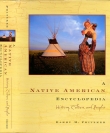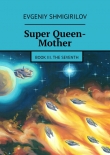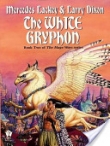
Текст книги "The British Study Edition of the Urantia Papers"
Автор книги: Tigran Aivazian
Жанр:
Религия
сообщить о нарушении
Текущая страница: 134 (всего у книги 295 страниц)
87:6.1 When men believed in ghosts only, religious ritual was more personal, less organized, but the recognition of higher spirits necessitated the employment of “higher spiritual methods” in dealing with them. This attempt to improve upon, and to elaborate, the technique of spirit propitiation led directly to the creation of defences against the spirits. Man felt helpless indeed before the uncontrollable forces operating in terrestrial life, and his feeling of inferiority drove him to attempt to find some compensating adjustment, some technique for evening the odds in the one-sided struggle of man versus the cosmos.
87:6.2 In the early days of the cult, man’s efforts to influence ghost action were confined to propitiation, attempts by bribery to buy off ill luck. As the evolution of the ghost cult progressed to the concept of good as well as bad spirits, these ceremonies turned toward attempts of a more positive nature, efforts to win good luck. Man’s religion no longer was completely negativistic, nor did he stop with the effort to win good luck; he shortly began to devise schemes whereby he could compel spirit co-operation. No longer does the religionist stand defenceless before the unceasing demands of the spirit phantasms of his own devising; the savage is beginning to invent weapons wherewith he may coerce spirit action and compel spirit assistance.
87:6.3 Man’s first efforts at defence were directed against the ghosts. As the ages passed, the living began to devise methods of resisting the dead. Many techniques were developed for frightening ghosts and driving them away, among which may be cited the following:
87:6.4 1. Cutting off the head and tying up the body in the grave.
87:6.5 2. Stoning the death house.
87:6.6 3. Castration or breaking the legs of the corpse.
87:6.7 4. Burying under stones, one origin of the modern tombstone.
87:6.8 5. Cremation, a later-day invention to prevent ghost trouble.
87:6.9 6. Casting the body into the sea.
87:6.10 7. Exposure of the body to be eaten by wild animals.
87:6.11 ¶ Ghosts were supposed to be disturbed and frightened by noise; shouting, bells, and drums drove them away from the living; and these ancient methods are still in vogue at “wakes” for the dead. Foul-smelling concoctions were utilized to banish unwelcome spirits. Hideous images of the spirits were constructed so that they would flee in haste when they beheld themselves. It was believed that dogs could detect the approach of ghosts, and that they gave warning by howling; that cocks would crow when they were near. The use of a cock as a weather vane is in perpetuation of this superstition.
87:6.12 Water was regarded as the best protection against ghosts. Holy water was superior to all other forms, water in which the priests had washed their feet. Both fire and water were believed to constitute impassable barriers to ghosts. The Romans carried water three times around the corpse; in the XX century the body is sprinkled with holy water, and hand washing at the cemetery is still a Jewish ritual. Baptism was a feature of the later water ritual; primitive bathing was a religious ceremony. Only in recent times has bathing become a sanitary practice.
87:6.13 But man did not stop with ghost coercion; through religious ritual and other practices he was soon attempting to compel spirit action. Exorcism was the employment of one spirit to control or banish another, and these tactics were also utilized for frightening ghosts and spirits. The dual-spiritism concept of good and bad forces offered man ample opportunity to attempt to pit one agency against another, for, if a powerful man could vanquish a weaker one, then certainly a strong spirit could dominate an inferior ghost. Primitive cursing was a coercive practice designed to overawe minor spirits. Later this custom expanded into the pronouncing of curses upon enemies.
87:6.14 It was long believed that by reverting to the usages of the more ancient mores the spirits and demigods could be forced into desirable action. Modern man is guilty of the same procedure. You address one another in common, everyday language, but when you engage in prayer, you resort to the older style of another generation, the so-called solemn style.
87:6.15 This doctrine also explains many religious-ritual reversions of a sex nature, such as temple prostitution. These reversions to primitive customs were considered sure guards against many calamities. And with these simple-minded peoples all such performances were entirely free from what modern man would term promiscuity.
87:6.16 Next came the practice of ritual vows, soon to be followed by religious pledges and sacred oaths. Most of these oaths were accompanied by self-torture and self-mutilation; later on, by fasting and prayer. Self-denial was subsequently looked upon as being a sure coercive; this was especially true in the matter of sex suppression. And so primitive man early developed a decided austerity in his religious practices, a belief in the efficacy of self-torture and self-denial as rituals capable of coercing the unwilling spirits to react favourably toward all such suffering and deprivation.
87:6.17 ¶ Modern man no longer attempts openly to coerce the spirits, though he still evinces a disposition to bargain with Deity. And he still swears, knocks on wood, crosses his fingers, and follows expectoration with some trite phrase; once it was a magical formula.
7. NATURE OF CULTISM87:7.1 The cult type of social organization persisted because it provided a symbolism for the preservation and stimulation of moral sentiments and religious loyalties. The cult grew out of the traditions of “old families” and was perpetuated as an established institution; all families have a cult of some sort. Every inspiring ideal grasps for some perpetuating symbolism – seeks some technique for cultural manifestation which will ensure survival and augment realization – and the cult achieves this end by fostering and gratifying emotion.
87:7.2 From the dawn of civilization every appealing movement in social culture or religious advancement has developed a ritual, a symbolic ceremonial. The more this ritual has been an unconscious growth, the stronger it has gripped its devotees. The cult preserved sentiment and satisfied emotion, but it has always been the greatest obstacle to social reconstruction and spiritual progress.
87:7.3 Notwithstanding that the cult has always retarded social progress, it is regrettable that so many modern believers in moral standards and spiritual ideals have no adequate symbolism – no cult of mutual support – nothing to belong to. But a religious cult cannot be manufactured; it must grow. And those of no two groups will be identical unless their rituals are arbitrarily standardized by authority.
87:7.4 The early Christian cult was the most effective, appealing, and enduring of any ritual ever conceived or devised, but much of its value has been destroyed in a scientific age by the destruction of so many of its original underlying tenets. The Christian cult has been devitalized by the loss of many fundamental ideas.
87:7.5 ¶ In the past, truth has grown rapidly and expanded freely when the cult has been elastic, the symbolism expansile. Abundant truth and an adjustable cult have favoured rapidity of social progression. A meaningless cult vitiates religion when it attempts to supplant philosophy and to enslave reason; a genuine cult grows.
87:7.6 ¶ Regardless of the drawbacks and handicaps, every new revelation of truth has given rise to a new cult, and even the restatement of the religion of Jesus must develop a new and appropriate symbolism. Modern man must find some adequate symbolism for his new and expanding ideas, ideals, and loyalties. This enhanced symbol must arise out of religious living, spiritual experience. And this higher symbolism of a higher civilization must be predicated on the concept of the Fatherhood of God and be pregnant with the mighty ideal of the brotherhood of man.
87:7.7 The old cults were too egocentric; the new must be the outgrowth of applied love. The new cult must, like the old, foster sentiment, satisfy emotion, and promote loyalty; but it must do more: It must facilitate spiritual progress, enhance cosmic meanings, augment moral values, encourage social development, and stimulate a high type of personal religious living. The new cult must provide supreme goals of living which are both temporal and eternal – social and spiritual.
87:7.8 No cult can endure and contribute to the progress of social civilization and individual spiritual attainment unless it is based on the biologic, sociologic, and religious significance of the home. A surviving cult must symbolize that which is permanent in the presence of unceasing change; it must glorify that which unifies the stream of ever-changing social metamorphosis. It must recognize true meanings, exalt beautiful relations, and glorify the good values of real nobility.
87:7.9 But the great difficulty of finding a new and satisfying symbolism is because modern men, as a group, adhere to the scientific attitude, eschew superstition, and abhor ignorance, while as individuals they all crave mystery and venerate the unknown. No cult can survive unless it embodies some masterful mystery and conceals some worthful unattainable. Again, the new symbolism must not only be significant for the group but also meaningful to the individual. The forms of any serviceable symbolism must be those which the individual can carry out on his own initiative, and which he can also enjoy with his fellows. If the new cult could only be dynamic instead of static, it might really contribute something worth while to the progress of mankind, both temporal and spiritual.
87:7.10 But a cult – a symbolism of rituals, slogans, or goals – will not function if it is too complex. And there must be the demand for devotion, the response of loyalty. Every effective religion unerringly develops a worthy symbolism, and its devotees would do well to prevent the crystallization of such a ritual into cramping, deforming, and stifling stereotyped ceremonials which can only handicap and retard all social, moral, and spiritual progress. No cult can survive if it retards moral growth and fails to foster spiritual progress. The cult is the skeletal structure around which grows the living and dynamic body of personal spiritual experience – true religion.
87:7.11 [Presented by a Brilliant Evening Star of Nebadon.]
PAPER № 88
FETISHES, CHARMS, AND MAGIC
Brilliant Evening Star
88:0.1 The concept of a spirit’s entering into an inanimate object, an animal, or a human being, is a very ancient and honourable belief, having prevailed since the beginning of the evolution of religion. This doctrine of spirit possession is nothing more nor less than fetishism. The savage does not necessarily worship the fetish; he very logically worships and reverences the spirit resident therein.
88:0.2 At first, the spirit of a fetish was believed to be the ghost of a dead man; later on, the higher spirits were supposed to reside in fetishes. And so the fetish cult eventually incorporated all of the primitive ideas of ghosts, souls, spirits, and demon possession.
1. BELIEF IN FETISHES88:1.1 Primitive man always wanted to make anything extraordinary into a fetish; chance therefore gave origin to many. A man is sick, something happens, and he gets well. The same thing is true of the reputation of many medicines and the chance methods of treating disease. Objects connected with dreams were likely to be converted into fetishes. Volcanoes, but not mountains, became fetishes; comets, but not stars. Early man regarded shooting stars and meteors as indicating the arrival on earth of special visiting spirits.
88:1.2 The first fetishes were peculiarly marked pebbles, and “sacred stones” have ever since been sought by man; a string of beads was once a collection of sacred stones, a battery of charms. Many tribes had fetish stones, but few have survived as have the Kaaba and the Stone of Scone. Fire and water were also among the early fetishes, and fire worship, together with belief in holy water, still survives.
88:1.3 Tree fetishes were a later development, but among some tribes the persistence of nature worship led to belief in charms indwelt by some sort of nature spirit. When plants and fruits became fetishes, they were taboo as food. The apple was among the first to fall into this category; it was never eaten by the Levantine peoples.
88:1.4 If an animal ate human flesh, it became a fetish. In this way the dog came to be the sacred animal of the Parsees. If the fetish is an animal and the ghost is permanently resident therein, then fetishism may impinge on reincarnation. In many ways the savages envied the animals; they did not feel superior to them and were often named after their favourite beasts.
88:1.5 When animals became fetishes, there ensued the taboos on eating the flesh of the fetish animal. Apes and monkeys, because of resemblance to man, early became fetish animals; later, snakes, birds, and swine were also similarly regarded. At one time the cow was a fetish, the milk being taboo while the excreta were highly esteemed. The serpent was revered in Palestine, especially by the Phoenicians, who, along with the Jews, considered it to be the mouthpiece of evil spirits. Even many moderns believe in the charm powers of reptiles. From Arabia on through India to the snake dance of the Moqui tribe of red men the serpent has been revered.
88:1.6 Certain days of the week were fetishes. For ages Friday has been regarded as an unlucky day and the number 13 as an evil numeral. The lucky numbers 3 and 7 came from later revelations; 4 was the lucky number of primitive man and was derived from the early recognition of the four points of the compass. It was held unlucky to count cattle or other possessions; the ancients always opposed the taking of a census, “numbering the people.”
88:1.7 Primitive man did not make an undue fetish out of sex; the reproductive function received only a limited amount of attention. The savage was natural minded, not obscene or prurient.
88:1.8 Saliva was a potent fetish; devils could be driven out by spitting on a person. For an elder or superior to spit on one was the highest compliment. Parts of the human body were looked upon as potential fetishes, particularly the hair and nails. The long-growing fingernails of the chiefs were highly prized, and the trimmings thereof were a powerful fetish. Belief in skull fetishes accounts for much of later-day head-hunting. The umbilical cord was a highly prized fetish; even today it is so regarded in Africa. Mankind’s first toy was a preserved umbilical cord. Set with pearls, as was often done, it was man’s first necklace.
88:1.9 Hunchbacked and crippled children were regarded as fetishes; lunatics were believed to be moon-struck. Primitive man could not distinguish between genius and insanity; idiots were either beaten to death or revered as fetish personalities. Hysteria increasingly confirmed the popular belief in witchcraft; epileptics often were priests and medicine men. Drunkenness was looked upon as a form of spirit possession; when a savage went on a spree, he put a leaf in his hair for the purpose of disavowing responsibility for his acts. Poisons and intoxicants became fetishes; they were deemed to be possessed.
88:1.10 Many people looked upon geniuses as fetish personalities possessed by a wise spirit. And these talented humans soon learned to resort to fraud and trickery for the advancement of their selfish interests. A fetish man was thought to be more than human; he was divine, even infallible. Thus did chiefs, kings, priests, prophets, and church rulers eventually wield great power and exercise unbounded authority.
2. EVOLUTION OF THE FETISH88:2.1 It was a supposed preference of ghosts to indwell some object which had belonged to them when alive in the flesh. This belief explains the efficacy of many modern relics. The ancients always revered the bones of their leaders, and the skeletal remains of saints and heroes are still regarded with superstitious awe by many. Even today, pilgrimages are made to the tombs of great men.
88:2.2 Belief in relics is an outgrowth of the ancient fetish cult. The relics of modern religions represent an attempt to rationalize the fetish of the savage and thus elevate it to a place of dignity and respectability in the modern religious systems. It is heathenish to believe in fetishes and magic but supposedly all right to accept relics and miracles.
88:2.3 The hearth – fireplace – became more or less of a fetish, a sacred spot. The shrines and temples were at first fetish places because the dead were buried there. The fetish hut of the Hebrews was elevated by Moses to that place where it harboured a superfetish, the then existent concept of the law of God. But the Israelites never gave up the peculiar Canaanite belief in the stone altar: “And this stone which I have set up as a pillar shall be God’s house.” They truly believed that the spirit of their God dwelt in such stone altars, which were in reality fetishes.
88:2.4 ¶ The earliest images were made to preserve the appearance and memory of the illustrious dead; they were really monuments. Idols were a refinement of fetishism. The primitives believed that a ceremony of consecration caused the spirit to enter the image; likewise, when certain objects were blessed, they became charms.
88:2.5 Moses, in the addition of the second commandment to the ancient Dalamatian moral code, made an effort to control fetish worship among the Hebrews. He carefully directed that they should make no sort of image that might become consecrated as a fetish. He made it plain, “You shall not make a graven image or any likeness of anything that is in heaven above, or on the earth beneath, or in the waters of the earth.” While this commandment did much to retard art among the Jews, it did lessen fetish worship. But Moses was too wise to attempt suddenly to displace the olden fetishes, and he therefore consented to the putting of certain relics alongside the law in the combined war altar and religious shrine which was the ark.
88:2.6 ¶ Words eventually became fetishes, more especially those which were regarded as God’s words; in this way the sacred books of many religions have become fetishistic prisons incarcerating the spiritual imagination of man. Moses’ very effort against fetishes became a supreme fetish; his commandment was later used to stultify art and to retard the enjoyment and adoration of the beautiful.
88:2.7 In olden times the fetish word of authority was a fear-inspiring doctrine, the most terrible of all tyrants which enslave men. A doctrinal fetish will lead mortal man to betray himself into the clutches of bigotry, fanaticism, superstition, intolerance, and the most atrocious of barbarous cruelties. Modern respect for wisdom and truth is but the recent escape from the fetish-making tendency up to the higher levels of thinking and reasoning. Concerning the accumulated fetish writings which various religionists hold as sacred books, it is not only believed that what is in the book is true, but also that every truth is contained in the book. If one of these sacred books happens to speak of the earth as being flat, then, for long generations, otherwise sane men and women will refuse to accept positive evidence that the planet is round.
88:2.8 The practice of opening one of these sacred books to let the eye chance upon a passage, the following of which may determine important life decisions or projects, is nothing more nor less than arrant fetishism. To take an oath on a “holy book” or to swear by some object of supreme veneration is a form of refined fetishism.
88:2.9 But it does represent real evolutionary progress to advance from the fetish fear of a savage chief’s fingernail trimmings to the adoration of a superb collection of letters, laws, legends, allegories, myths, poems, and chronicles which, after all, reflect the winnowed moral wisdom of many centuries, at least up to the time and event of their being assembled as a “sacred book.”
88:2.10 To become fetishes, words had to be considered inspired, and the invocation of supposed divinely inspired writings led directly to the establishment of the authority of the church, while the evolution of civil forms led to the fruition of the authority of the state.








